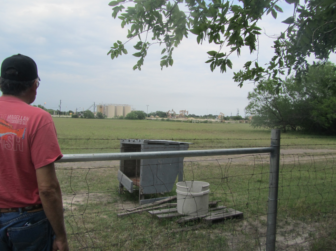The oil and gas industry is dumping more than 8 million tons of methane and toxic pollutants into our air each year and having a substantial negative impact on public health. Recent research shows that air pollutants from oil and gas extraction, development, and processing chain are associated with 750,000 summertime asthma attacks in children and 500,000 missed school days. As oil and gas development increases, smog and ozone commonly associated with urban areas has moved into rural America and changed country living for the worse.
Stories from the frontlines are frustrating, heartbreaking, and eye-opening. Environmental organizations and communities across the country are fighting for protections to reduce emissions in order to preserve our shared environment and combat climate change. Fathers, mothers, and community members in rural Texas, Pennsylvania, New Mexico and beyond are fighting for their properties, homes, families, and health. Below are excerpts from a newly-released report from Earthworks and Clean Air Task Force titled “Country Living, Dirty Air” which highlights the stories of individuals and families negatively impacted by oil and gas development near their homes.
Five Country Communities Living with Dirty Air from Oil & Gas
In rural Texas, George describes his Karnes County countryside home as a picturesque place. “I spent years cultivating a peaceful place to retire, where my grandkids could play outside and enjoy the wandering deer,” he says. “But after the [oil and gas] boom, I no longer feel safe, the flare behind my home is loud and I often notice odors.” In the past five years, the number of wells in Karnes has grown exponentially and the smog that George used to only see in the big city of San Antonio took hold of the air around his home. Because of the significant health issues that George and his family have experienced in the last few years, he has joined community members calling on the state to install an air quality monitor in the area. Currently, air quality monitors are installed in areas according to population density.

adjacent to an oil and gas facility
To the northwest, Mike Eisenfeld has similar complaints about lack of air quality monitoring in San Juan County, New Mexico where there are more than 12,000 wells. Even though a study by the New Mexico Department of Health revealed a link between the frequency of respiratory emergency room visits and high ozone days, there are no regular public service announcements regarding high ozone days and recommended precautionary measures citizens should take.
Continuing northwest, because of threats and harassment, residents in Uintah County, Utah are afraid to even speak out about the worsening air conditions and alarming public health trends that they’ve experienced since fracking came to town. While ozone air quality alerts are normally associated with hot days, the problem here is during the winter inversions, when dense, cold air gets trapped under a layer of warmer air, sealing in pollution. Humans aren’t the only ones suffering…there’s been an increase in infant mortality rates among horses, cattle, and domestic pets.
Rural communities on the East Coast are experiencing the same negative impacts from a rapid buildout of drilling, pipelines, and compressor and processing stations. One family has moved away from their idyllic farm in the Ohio countryside because of their declining health since they were pressured into leasing their land for drilling. The difficult decision was made easy when their six-year-old grandson awoke crying at Christmastime gasping for air…
“I can’t breathe, I can’t breathe.”
Just across the state line in Pennsylvania, Dale Tiberie, is a retired coal miner who undergoes ongoing evaluations for black lung, the disease of the mines. Retired, yes, but done with tremendously hazardous industry? No. Less than 500 feet from his back door is a fracked well. And it’s not just his and his family’s health that are impacted by the well. Dale loves fishing and has seen the industry’s negative impact on the waterways and aquatic life in his once green, healthy corner of the state.


